December 1 marks the 500th anniversary of the birth of Shingen Takeda (1521-1573), a daimyo (feudal lord) widely regarded as one of the greatest military commanders of Japan’s Warring States Period (1467-1615). Shingen’s military expeditions saw him conquer neighboring Shinano Province (modern day Nagano Prefecture) and also engage in a protracted war with his arch-enemy, Kenshin Uesugi (1530-1578), lord of Echigo Province (modern day Niigata Prefecture). Shingen’s prowess as a military strategist earned him the nickname “The Tiger of Kai.”
The Takeda clan were lords of Kai Province (modern day Yamanashi Prefecture) and even after five centuries, Yamanashi continues to recognize and honor its favorite son in myriad ways, including with large statues of the man outside many of the prefecture’s train stations. To learn more about this man’s life and legacy, there are several fascinating locations not far from JR Kofu station that are specifically associated with Shingen.
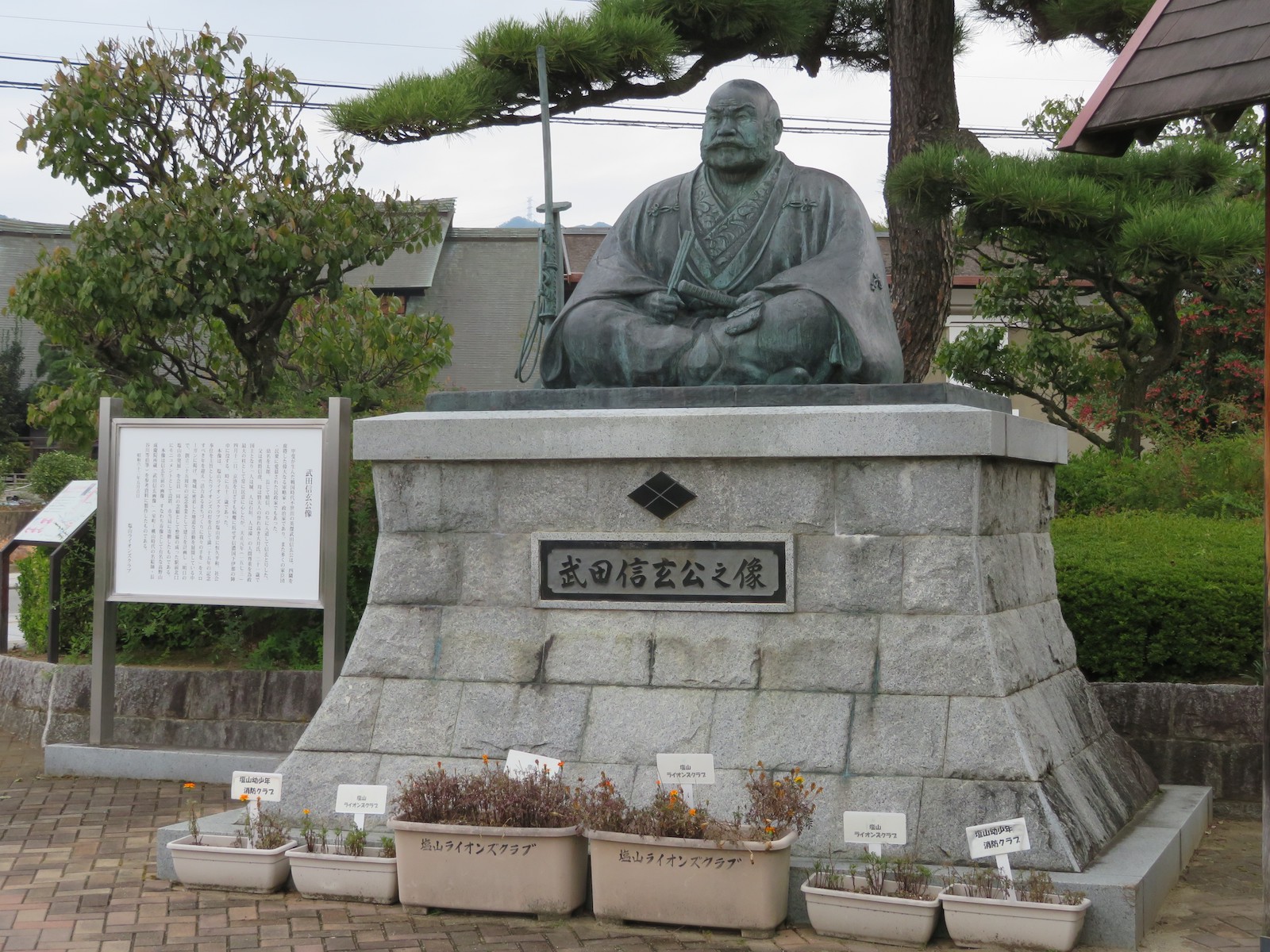
Takeda Shrine and the Shingen Museum
Takeda Shrine was built in 1919 on the site of Shingen’s former residence. Unlike many daimyo who lived in palaces on well-fortified castle grounds, Shingen, who was well known for taking the fight to his enemies, did not maintain a castle with extensive defensive features. Rather, he settled behind a simple moat that defined the boundaries of his residential estate and set him apart from his retainers. Apparently only two generations of Takeda warlords resided at this location before Maizuru Castle was built further down the valley in the 1590s (just on the other side of JR Kofu Station.
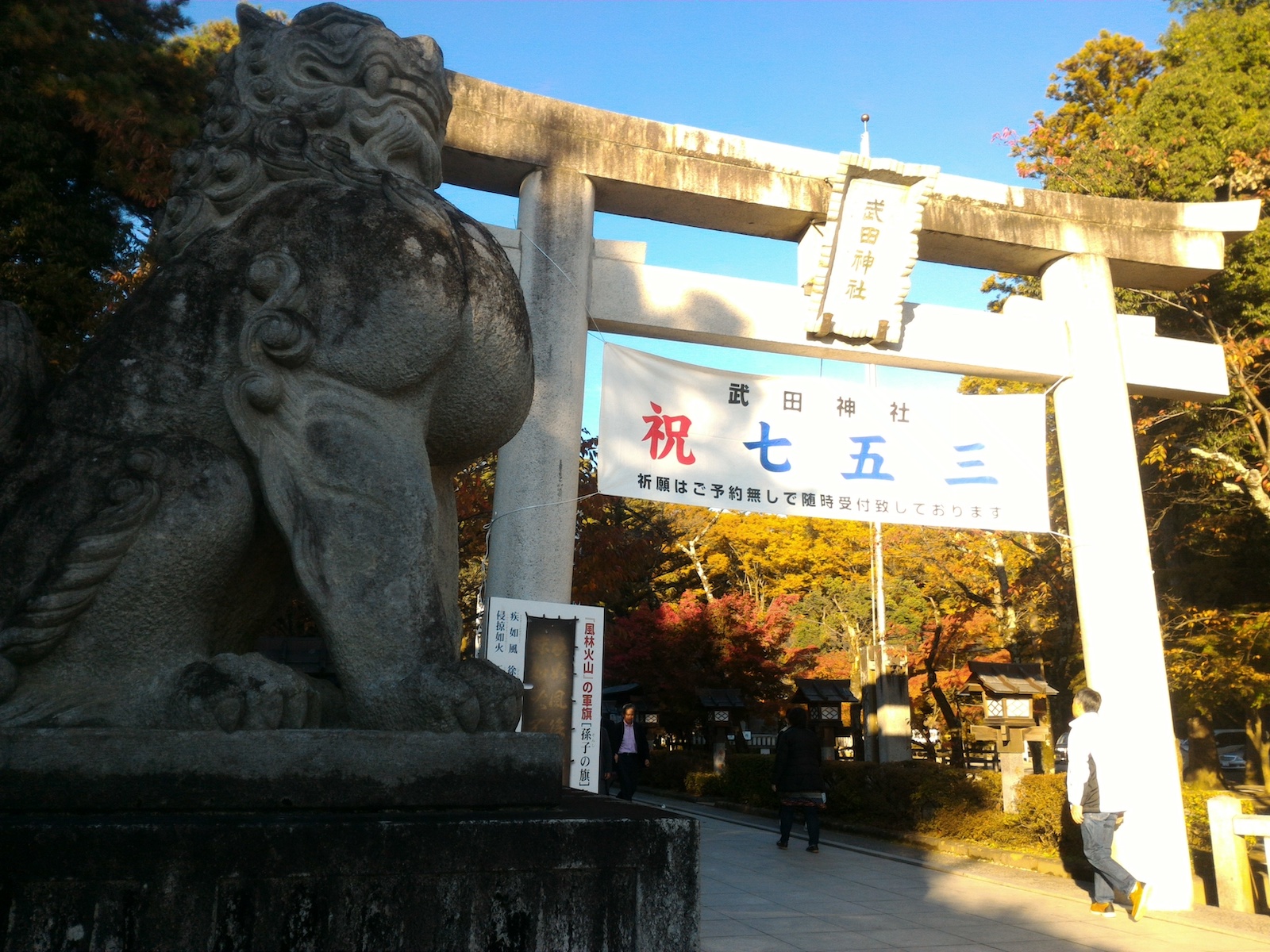
The busy, popular shrine is elegantly understated, with unpainted wood and cedar shingles in the style of the early twentieth century when it was built. Little is left to indicate this land was once used for a daimyo’s residence, although there is still a well that was the primary water source for Shingen’s household. The Takeda family crest, with its four diamonds, is a ubiquitous decoration.
Perhaps the most eye-catching feature of the shrine ground is the Noh stage, set away from the main shrine and fronted by a large lawn.
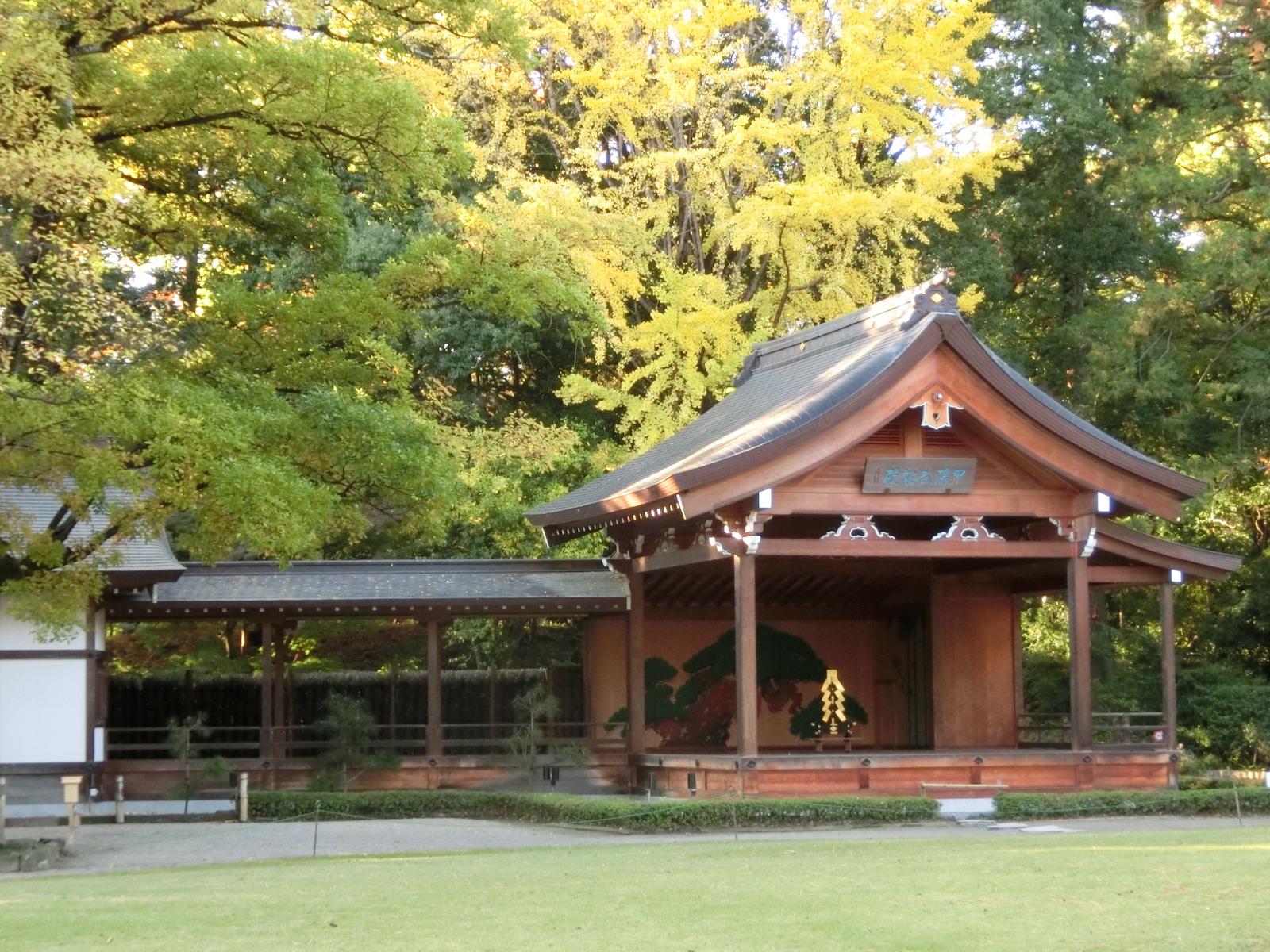
Take a bit of time to explore the area behind and to the west of the shrine buildings, which is heavily wooded, with trails that enable visitors to wander and imagine the life of a sixteenth century warlord ensconced on acreage.
Next door to the shrine grounds, don’t miss the new Shingen Museum, where you can learn more about Shingen’s life and times. The museum opened in 2019 with bilingual explanations in a modern display introducing the history of the Takeda clan and especially details about Shingen’s life and his many successful military campaigns. Virtual reality booths allow you to go on campaign with him. Shingen relics are also on display.
Hours: 9:00 to 17:00, Wednesday to Monday (also closed December 29-31). Admission to the permanent exhibition is free of charge; 300 yen for any special exhibition).
A bus bound for Takeda Shrine runs from Kofu Station regularly and takes less than 10 minutes. The distance can be walked in less than 30 minutes.
Yogaisanjo and Sekisuiji
Die hard Shingen fans, especially those who also like to hike, may want to visit his purported birth site, Yogaisan Castle on Mt Yogai, up the Ai River valley from Takeda Shrine. Japan’s earliest castles were usually mountain fortresses with earthen redoubts rather than stone walls and this castle, built shortly before Shingen’s birth, is no exception. Now a ruin, the mounded earthworks and a stone monument stating that this is his birthplace using characters written by early twentieth century Navy admiral Heihachiro Togo (1848-1934) are about all that is left to reward visitors who are prepared to hike up the mountain. At the trailhead there is a signboard in Japanese explaining the history of the fortress, together with warnings to beware of the bears—good thing it’s winter.
According to legend, the infant Shingen received his first religious rites at Sekisuiji temple in the valley below Yogaisan Castle.
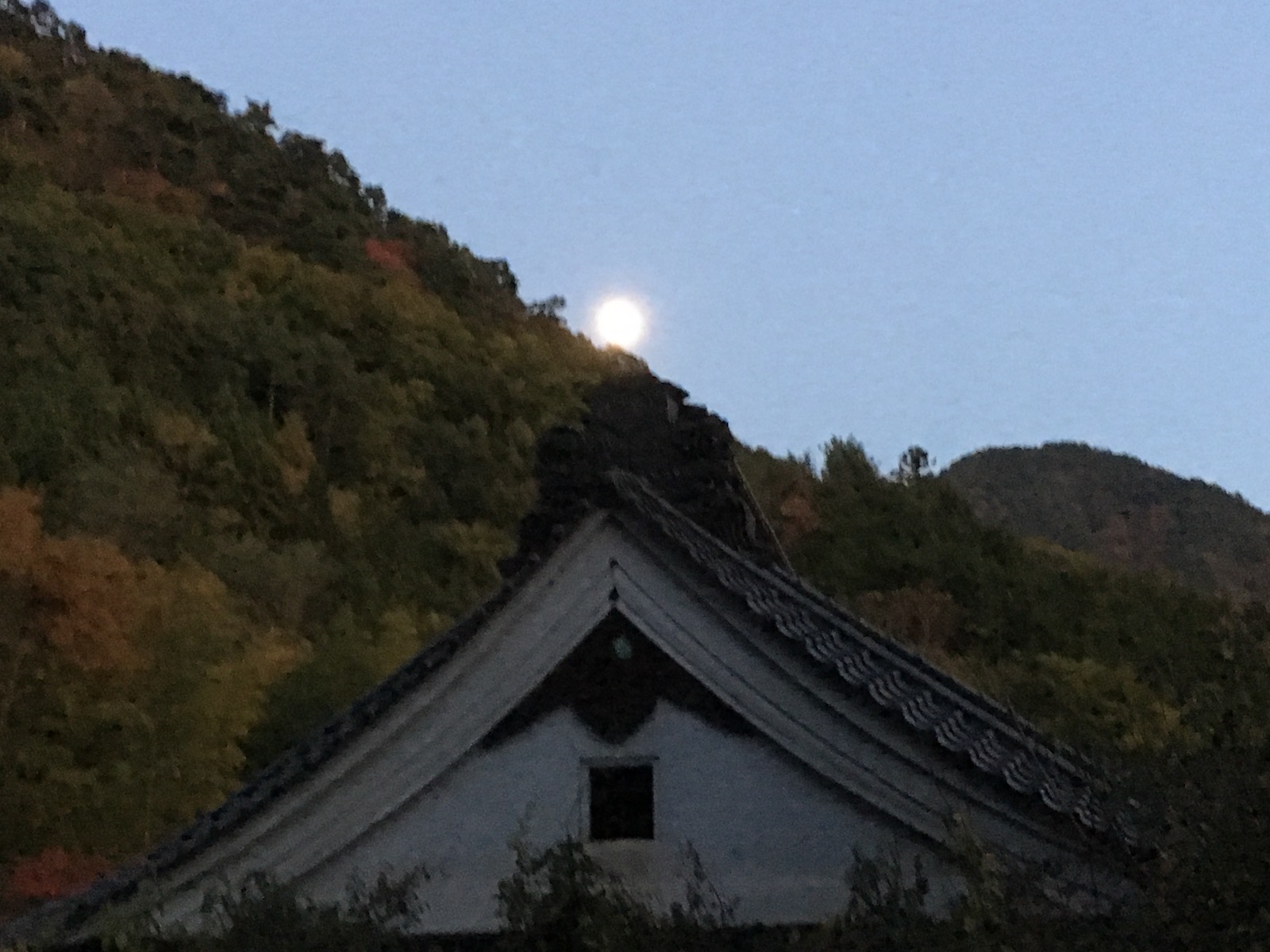
Kai Zenkoji
Shingen battled Kenshin Uesugi five times between 1553 and 1564. Kenshin often used Zenkoji temple in modern-day Nagano city as his headquarters. Around 1558 (sources differ as to the exact year) Shingen captured the temple and decided to remove the temple’s treasures, ostensibly for safekeeping. The greatest treasure Shingen sought to protect was the temple’s hibutsu (hidden Buddha), a wooden Buddha statue carved in India and believed to be the first such image brought to Japan when Buddhism was introduced in the early sixth century.
There are different versions of this story, some attributing the decision to evacuate the hibutsu to the temple’s chief abbott and others giving Shingen credit for the decision. Still others imply that in fact Shingen purloined the sacred relic. In any event, the hibutsu was removed to Kai Province, where a new Zenkoji was built to house it. Now known as Kai Zenkoji to distinguish it from the original, this large Pure Land Buddhist temple has much to recommend it.

Unusually for a Buddhist temple, it is possible to enter the temple and explore a bit. Be sure to check out the dragon on the ceiling. Stand directly under the dragon and clap to hear the sound echo around you. There are also extensive murals of Buddhist artwork, most depicting the horrors of hell in excruciating detail.
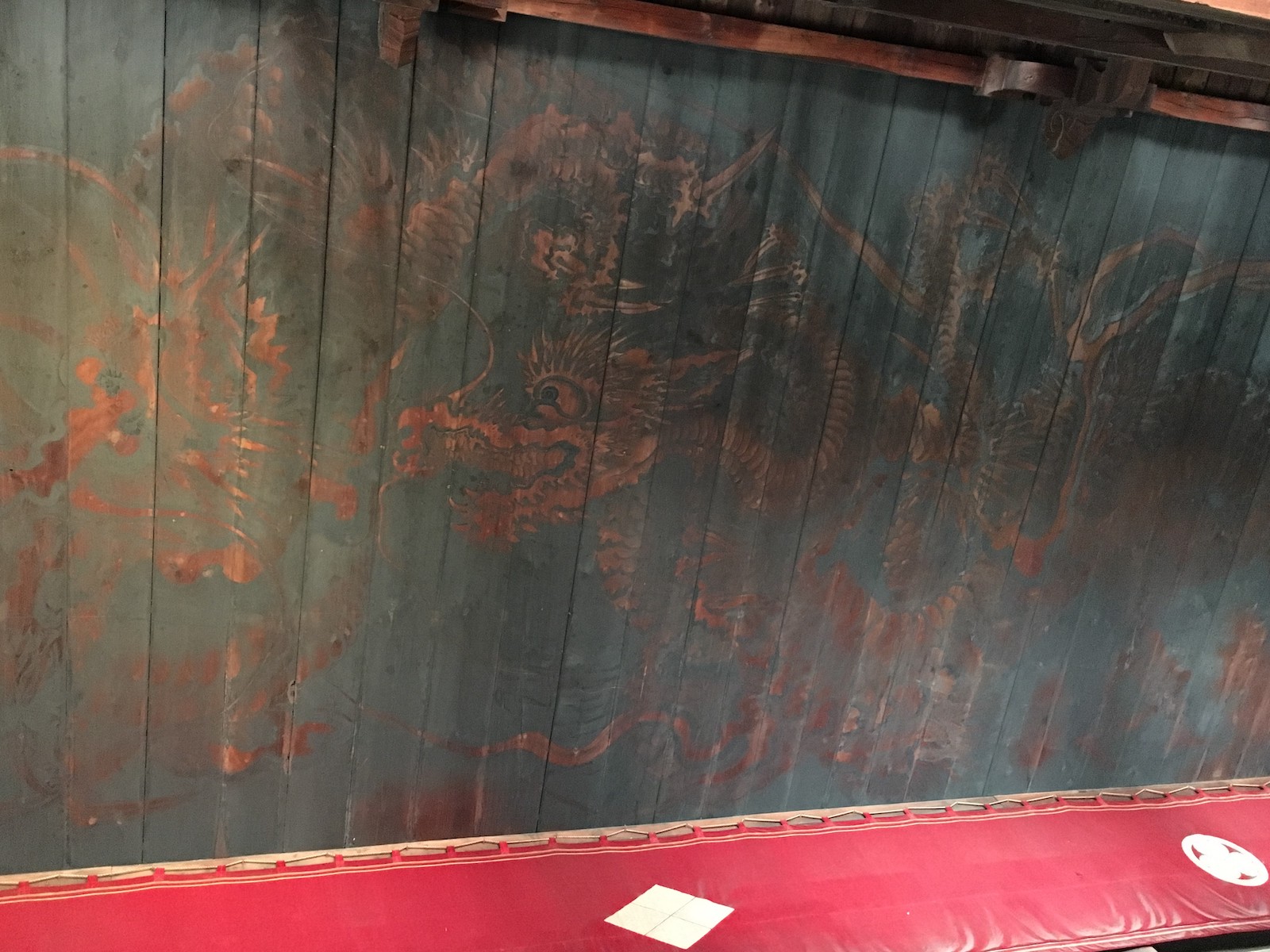
But the real fascination is beneath the temple, accessed by stairs at the back. Visitors are expected to traverse a pitch dark labyrinth in search of a key to paradise, attached to a wall deep inside, purportedly immediately beneath the temple’s main altar. Consider it your own personal journey of enlightenment.
Alas, the ancient hibutsu no longer resides at Kai Zenkoji. In 1596, after Kyoto was struck by a calamitous earthquake, Hideyoshi Toyotomi (1537-1598), then the prevailing warlord of the country, removed the relic to Kyoto. It was finally returned to its home in Nagano in 1598, where it remains to this day. A replica is housed at Kai Zenkoji and kept as a hibitsu, only seen by the public every seven years.
On a clear day, visitors get a good view of Mt. Fuji from the temple’s high veranda. And don’t miss the two and half meter “Great Buddha of Kai” on the temple grounds.
Kai Zenkoji is about a 15-minute walk from Sakaori Station on the JR Chuo Line.
These few destinations are highlights of Shingen’s visible legacy in Yamanashi and the esteem in which he is held, even five centuries after his birth.
Vicki L Beyer, a regular Japan Today contributor, is a freelance travel writer who also blogs about experiencing Japan. Follow her blog at jigsaw-japan.com.
© Japan Today Take our user survey and make your voice heard.
Take our user survey and make your voice heard.















4 Comments
Login to comment
Kyo wa heiwa dayo ne
Buddhist artworks depicting hell ?
Oh dear !
Never mind !
RegBilk
BungleToday 01:31 pm JST
Thanks Bungle. Sounds like a good read.